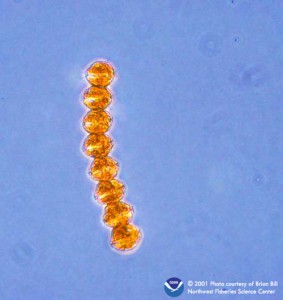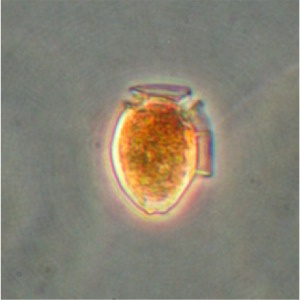The Puget Sound Ecosystem Monitoring Program released the 4th annual report on marine water conditions in Puget Sound for 2014 on September 9, 2015. The report, ‘ Puget Sound Marine Waters: 2014 Overview,’ enhances the understanding of the complex ecosystem of Puget Sound, an economic lifeline for Western Washington. The comprehensive report covers a host of topics including climate, weather, river inputs, seawater temperature, salinity, nutrients, oxygen, ocean acidification, plankton, toxins, pathogens, and shellfish.

Since the initial report debuted in 2011,it has featured a section highlighting the NCCOS-supported ECOHAB project, Puget Sound Alexandrium Harmful Algal Blooms. The project models favorable habitat areas for the harmful algae Alexandrium catenella in Puget Sound through the creation of annual cyst maps. The latest report notes that emergency cyst mapping supported by ECOHAB partners and Penn Cove Shellfish was conducted in response to an unprecedented 2014 Alexandrium bloom in bays of Hood Canal. The bloom sparked concern that new cyst beds might expand the areas likely to seed blooms in 2015. These mapping results were distributed to shellfish growers, health managers, and the SoundToxins monitoring program with a recommendation to increase vigilance for monitoring Alexandrium cells and toxins during the 2015 season and beyond. Indeed, the summer of 2015 saw a bloom of A. catenella red tide in the Hood Canal prompting closure of shellfish harvesting.

The report series also highlights findings of note from monitoring of other species of harmful alga including Dinophysis spp. and algal biotoxins in Puget Sound by key NCCOS partners at the Washington Department of Health, Northwest Fisheries Science Center, and Sound Toxins. The newly announced NCCOS MERHAB project, Monitoring and Management of Lipophilic Shellfish Toxins in Washington State will support comprehensive field and laboratory studies to characterize the abundance and distribution of Dinophysis spp. and another toxic alga, Azadinium spp., known to produce lipid and fat soluble (lipophilic) toxins in seawater and shellfish, causing potential for human health related illnesses.
For more information, contact Marc Suddleson.
